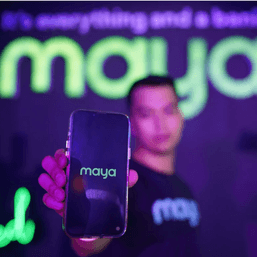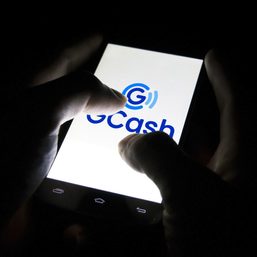SUMMARY
This is AI generated summarization, which may have errors. For context, always refer to the full article.

MANILA, Philippines – In 2023, the average Filipino still can’t last for two weeks without using physical cash to pay.
Among Filipinos who actually tried to go cashless in 2023, the average number of days that they successfully managed not to use cash was 10 days, according to the findings of the Visa Consumer Payment Attitudes Study 2024.
Most Filipinos believe that they can go at least a week without using physical coins and bills. According to the study, 82% of Filipinos believe they can go cashless for a day, but that number drops to 68% for three days, and just 52% for a week.
This shouldn’t come as a surprise even for those living in the metro. If you’ve ever gone out to buy a snack from a nearby store – only to realize you forgot to bring any cash – you’ll find that you’re left at the mercy of mobile wallets that aren’t always online.
What about for public transportation? For those commuting by jeep, tricycle, or pedicab, it’s practically impossible to use anything other than cold, hard cash.
If you’re using trains, you might have some more luck going cashless. For instance, commuters using the Light Rail Transit Line 1 can buy single journey QR tickets through Maya. Eventually, you might also be able to tap your Mastercard card to pay for your fares in the Metro Rail Transit Line 3, as well as EDSA and Bonifacio Global City buses (READ: You can eventually tap your Mastercard to pay for MRT3, bus fares).
Likewise, Visa country head for the Phililippines Jeff Navarro said that “discussions are in place with the [Department of Transportation] and all other operator-participants” for a similar tap to pay function for Visa cards in transit stations.
Randolph Clet, head of the Department of Transportation’s automatic fare collection system (AFCS), told Rappler that the goal is to go contactless and cashless for transportation “soon” by enabling commuters to pay for fares using bank cards, QR codes, and mobile payments through near-field communications or NFC. For comparison, other Southeast Asian cities, such as Singapore and Bangkok, have had tap-to-pay functions in their trains for several years now.
But although the Philippines may be lagging behind some of its neighbors, Visa’s country head is confident that we’re headed in the right direction.
“[In] Singapore, you can see there that practically everyone is already using mobile pay. Apple Pay is there. Google Pay is there,” Navarro said. “So, they’re very much ahead when it comes to real penetration and usage already.”
“What we’re seeing in Philippines is directionally it’s already going to that place. The momentum is there. We have critical mass in terms of consumers already adopting this new technology,” he added. “We’re really in a good positive place towards going cashless by 2030.”
Filipinos seem optimistic as one in three believe that the Philippines can become cashless by 2030. In fact, plenty are already trying to drop cash. In 2023, 83% of Filipino consumers attempted to go cashless, which actually places the Philippines second in ASEAN. Vietnam (89%) leads the region while Thailand (81%) is third and Malaysia (76%) is fourth. Singapore (67%) places fifth only because many Singaporeans have already fully embraced cashless payments.
Internet, fraud are still problems
The first step to achieving a cashless society would be to have more Filipinos set up transactional accounts that can be used to pay digitally. This could be by bringing them into the formal banking system through bank accounts or by having them set up mobile wallet accounts.
Navarro said that while the Bangko Sentral ng Pilipinas has yet to release official figures, he estimates that close to 70% of Filipinos now have a bank or e-wallet account.
To reach the remaining 30% of “unbanked” Filipinos, the Visa country head said that banks, fintech companies, and even remittance and currency exchange companies must take the lead in creating “products and services that will allow them to be part of that economy.”
There is still the problem of infrastructure. In 2023, the Philippines’ internet penetration rate stood at only 73.1% of the total population, with some geographically-isolated communities having no internet access. The country’s internet speed also trails others in the region (READ: 91% of PH workers believe internet infrastructure needs to improve faster – survey)
“It’s difficult to do a digital payment if there’s no internet, there’s no Wi-Fi, there’s no nothing. So, that has a natural cycle that will fix itself. So, as to when that becomes available, then definitely digital payments becomes part of the community,” Navarro said, adding that Visa is also exploring possible offline payments solutions.
“We’re trying to work with some of our issuers and acquirers to see if we can do something that’s offline. These are very early discussions. There’s still no concrete solution. But it’s really one of those that we want to do because it again supports the national agenda of the government for financial inclusion.”
There is also the problem of digital fraud. Navarro said that over the last five years, Visa as a whole has invested close to $10 billion in terms of improving its fraud, risk, and identity and cybersecurity solutions. That includes having three dedicated cybersecurity centers that monitors transactions 24/7. Visa, along with other financial institutions, have also turned to artificial intelligence in the fight against fraud. (READ: EXPLAINER: What is digital fraud and how do you protect yourself from scams?)
“This has translated to roughly a prevention of $27 – $28 billion in terms of fraud,” Navarro said. “Whatever solutions that we’re implementing [elsewhere] is also the same platform that’s implemented in the Philippines.” – Rappler.com
Add a comment
How does this make you feel?




![[ANALYSIS] Rule of 120: A practical method of asset allocation and minimizing investment risk exposure](https://www.rappler.com/tachyon/2024/02/tl-rule-120-02222024.jpg?resize=257%2C257&crop=274px%2C0px%2C720px%2C720px)




There are no comments yet. Add your comment to start the conversation.